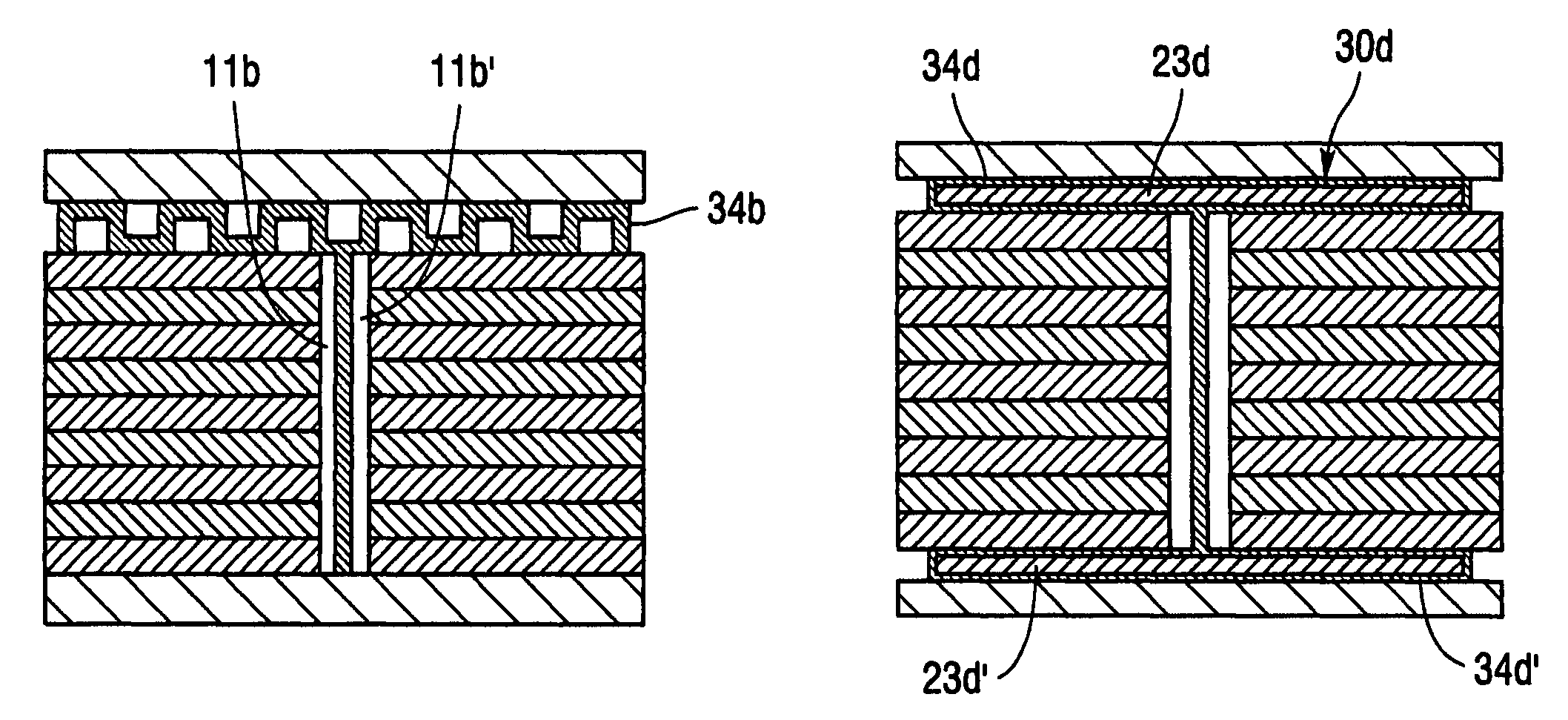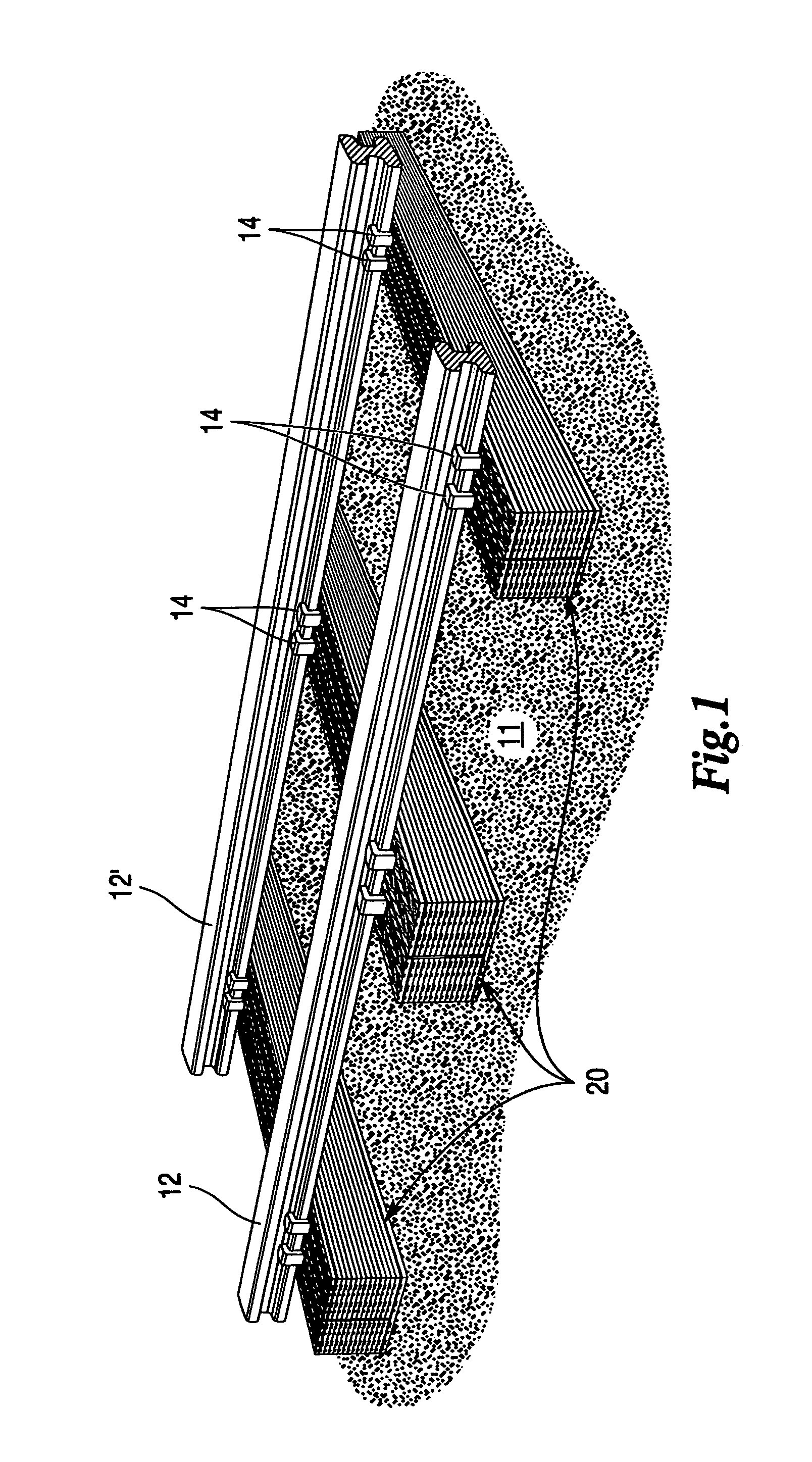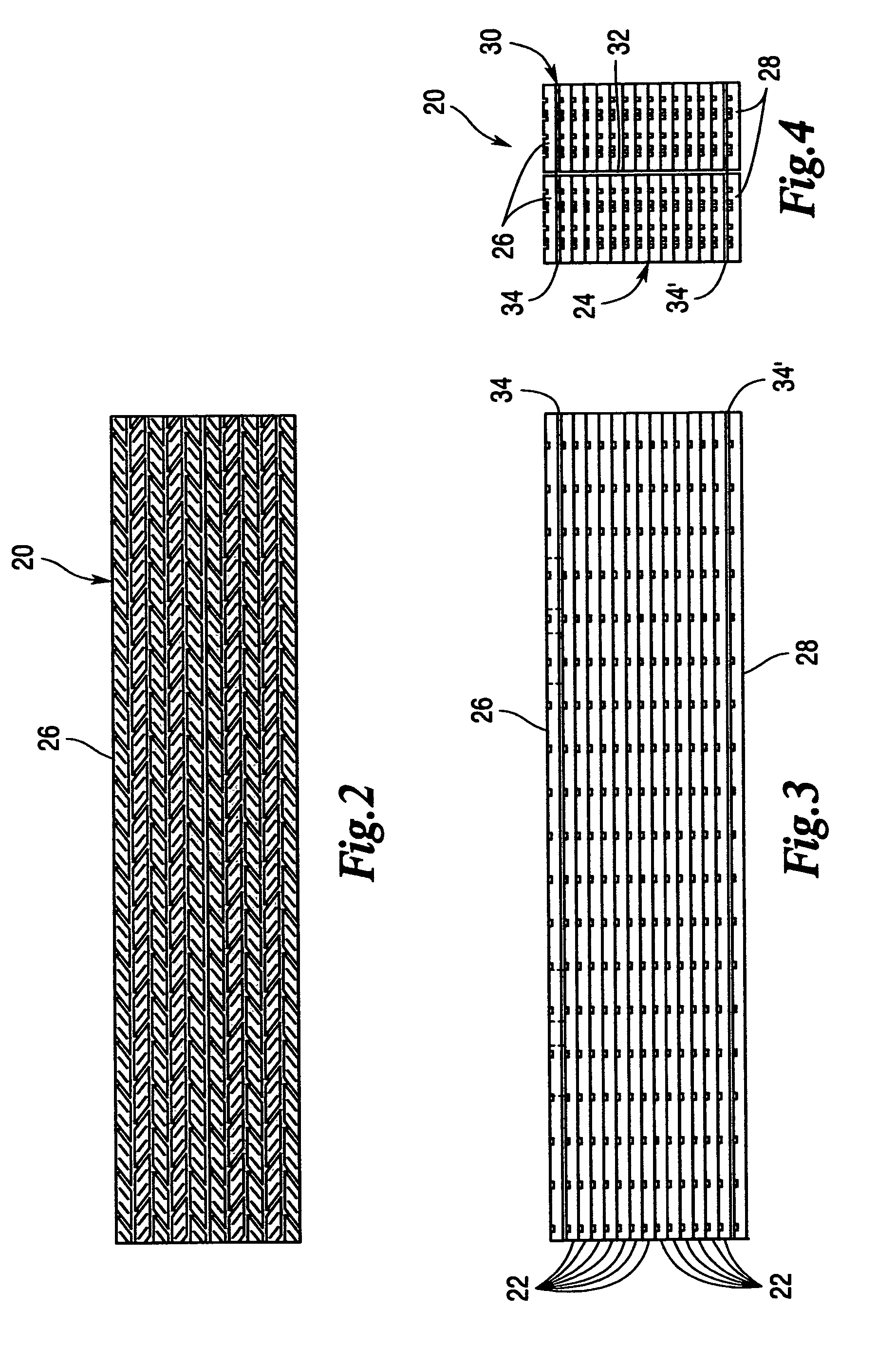Tire tread railroad tie
a railroad tie and tread technology, applied in the field of railbeds, can solve the problems of compromising the integrity of rail beds, and affecting the use of railroad ties, so as to achieve the effect of increasing torsional and bending stiffness, increasing compressive strength, and adequate compressive strength
- Summary
- Abstract
- Description
- Claims
- Application Information
AI Technical Summary
Benefits of technology
Problems solved by technology
Method used
Image
Examples
first embodiment
the railroad tie of the present invention is shown in FIGS. 1-5 generally at 20. As depicted therein, railroad tie 20 has an elongated, generally rectangular shape. It will be understood that other shapes are possible and within the purview of the present invention, although elongated rectangular ties are conventional and will initially be the preferred configuration. As best seen in FIG. 5, elongated tie 20 is configured as at least one, and more preferably, two stacks 24 of laminated tire treads 22. These treads are preferably recycled tires, most of which are belted and generally, steel belted. Treads 22 are laminated using an adhesive, such as a two-part, rubber-to-rubber epoxy. An upper (26) and lower (28) surface tire tread ply are adhered to each laterally extending face of the stacks 24. As seen in FIG. 1, ties 20 are spaced in conventional fashion on a rail bed ballast 11 to provide a support bed for parallel rails 12, 12′.
Railroad tie 20 has a reinforcing means or spine 30...
PUM
 Login to View More
Login to View More Abstract
Description
Claims
Application Information
 Login to View More
Login to View More - R&D
- Intellectual Property
- Life Sciences
- Materials
- Tech Scout
- Unparalleled Data Quality
- Higher Quality Content
- 60% Fewer Hallucinations
Browse by: Latest US Patents, China's latest patents, Technical Efficacy Thesaurus, Application Domain, Technology Topic, Popular Technical Reports.
© 2025 PatSnap. All rights reserved.Legal|Privacy policy|Modern Slavery Act Transparency Statement|Sitemap|About US| Contact US: help@patsnap.com



